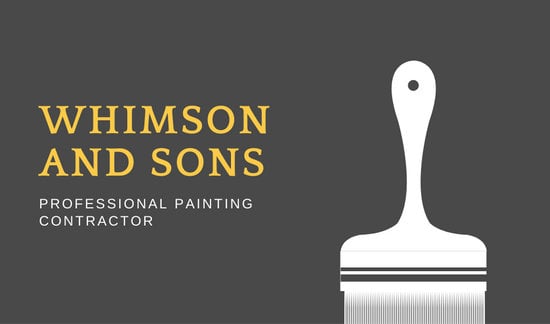Check Out The Impact Of Seasonal Elements On The Effectiveness Of Industrial External Paint And Identify The Ideal Times To Attain Enduring Results For Your Job
Check Out The Impact Of Seasonal Elements On The Effectiveness Of Industrial External Paint And Identify The Ideal Times To Attain Enduring Results For Your Job
Blog Article
Produced By-McLamb Browne
When you're preparing a commercial exterior paint project, seasonal aspects can make or damage your outcomes. You'll wish to consider just how temperature and moisture effect paint application and drying times. Choosing the best season can guarantee your paint adheres correctly and lasts much longer. Yet which periods are really the most effective for this sort of job? Allow's check out the key elements that can impact your project's success.
The Impact of Temperature on Paint Application
When you're preparing an industrial external painting project, the temperature level can considerably impact how well the paint sticks and dries.
Preferably, you intend to paint when temperature levels vary in between 50 ° F and 85 ° F. If it's too cool, the paint might not treat correctly, resulting in issues like peeling or cracking.
On the other side, if it's also warm, the paint can dry out as well promptly, avoiding proper bond and causing an unequal coating.
You ought to likewise take into consideration the time of day; early morning or late afternoon offers cooler temperatures, which can be extra favorable.
Constantly examine the producer's referrals for the specific paint you're making use of, as they usually provide assistance on the ideal temperature level variety for optimum outcomes.
Moisture and Its Impact on Drying Times
Temperature isn't the only environmental element that affects your business exterior painting job; moisture plays a considerable role too. High humidity degrees can slow down drying out times substantially, impacting the total top quality of your paint work.
When the air is saturated with moisture, the paint takes longer to cure, which can bring about issues like poor attachment and a higher danger of mold growth. If you're painting on a specifically damp day, be planned for prolonged delay times between coats.
It's critical to keep an eye on neighborhood weather and plan appropriately. Preferably, commercial window painting for humidity levels between 40% and 70% for optimum drying out.
Maintaining these consider mind guarantees your job remains on track and provides a lasting finish.
Best Seasons for Commercial Exterior Painting Projects
What's the very best time of year for your commercial exterior painting tasks?
Springtime and early autumn are normally your best choices. During these seasons, temperatures are moderate, and humidity levels are commonly reduced, developing optimal conditions for paint application and drying.
Prevent summer's intense heat, which can trigger paint to dry too promptly, causing bad adhesion and coating. In a similar way, winter's cold temperature levels can prevent appropriate drying out and healing, risking the long life of your paint job.
Go for days with temperature levels between 50 ° F and 85 ° F for optimal results. Keep in mind to examine the neighborhood weather forecast for rainfall, as damp conditions can wreck your job.
Preparation around these factors ensures your paint task runs smoothly and lasts longer.
Verdict
Finally, preparing your industrial outside painting jobs around seasonal factors to consider can make a substantial distinction in the end result. By scheduling job during the excellent temperatures and humidity degrees, you'll guarantee much better attachment and drying times. impressions painting reviews in mind to watch on neighborhood weather forecasts and pick the correct time of year-- springtime and early loss are your best bets. Taking these actions will certainly aid you attain a resilient and specialist finish that lasts.
